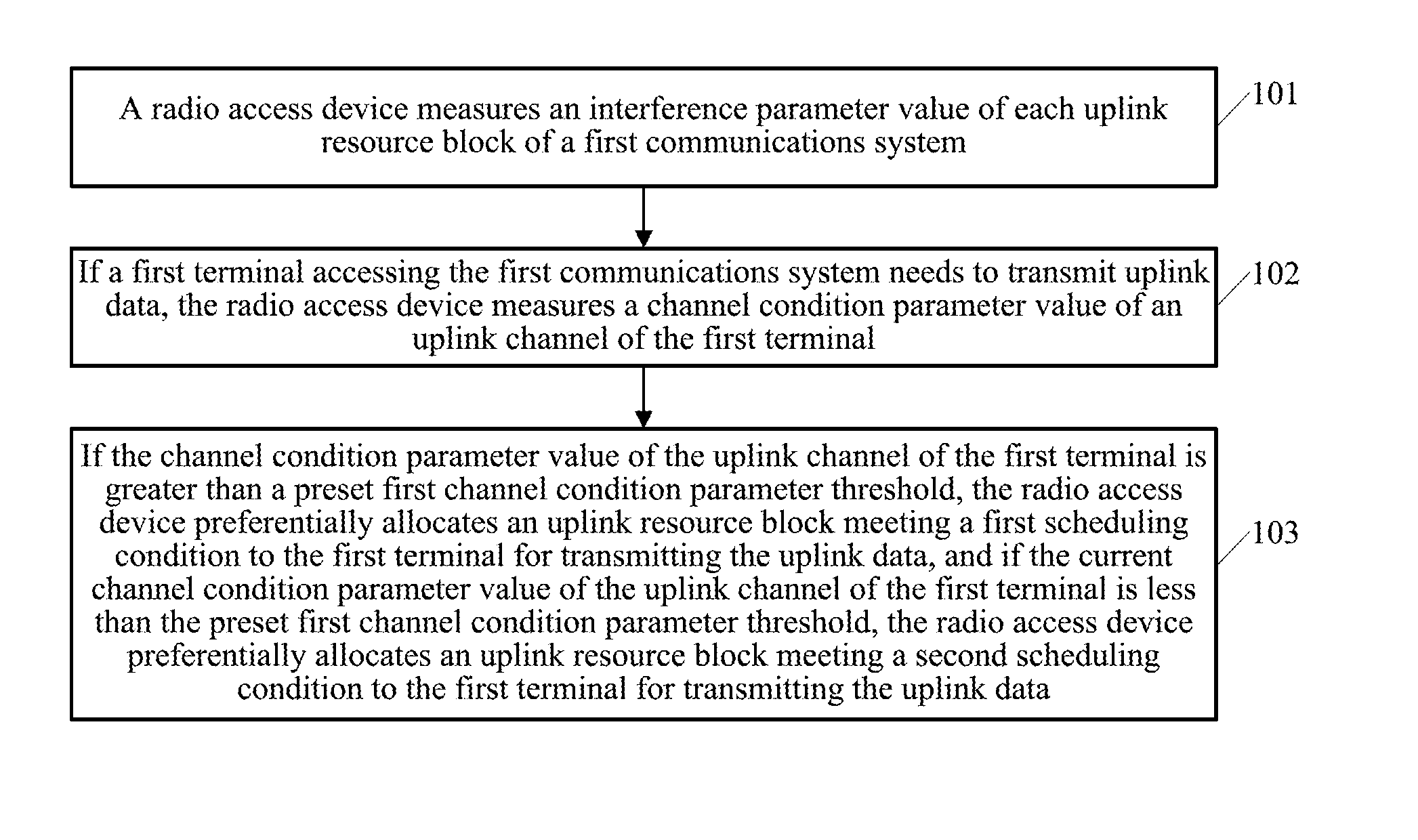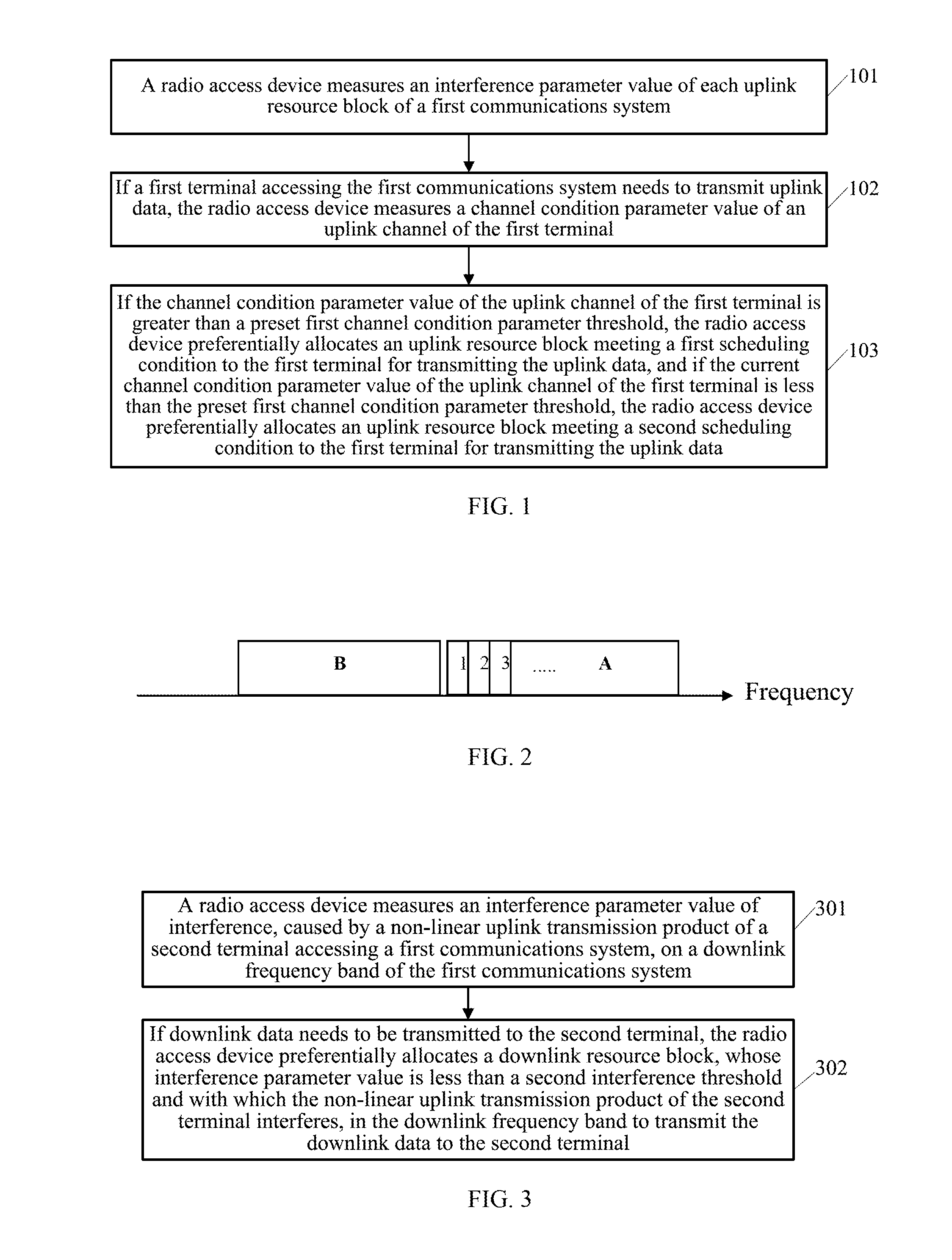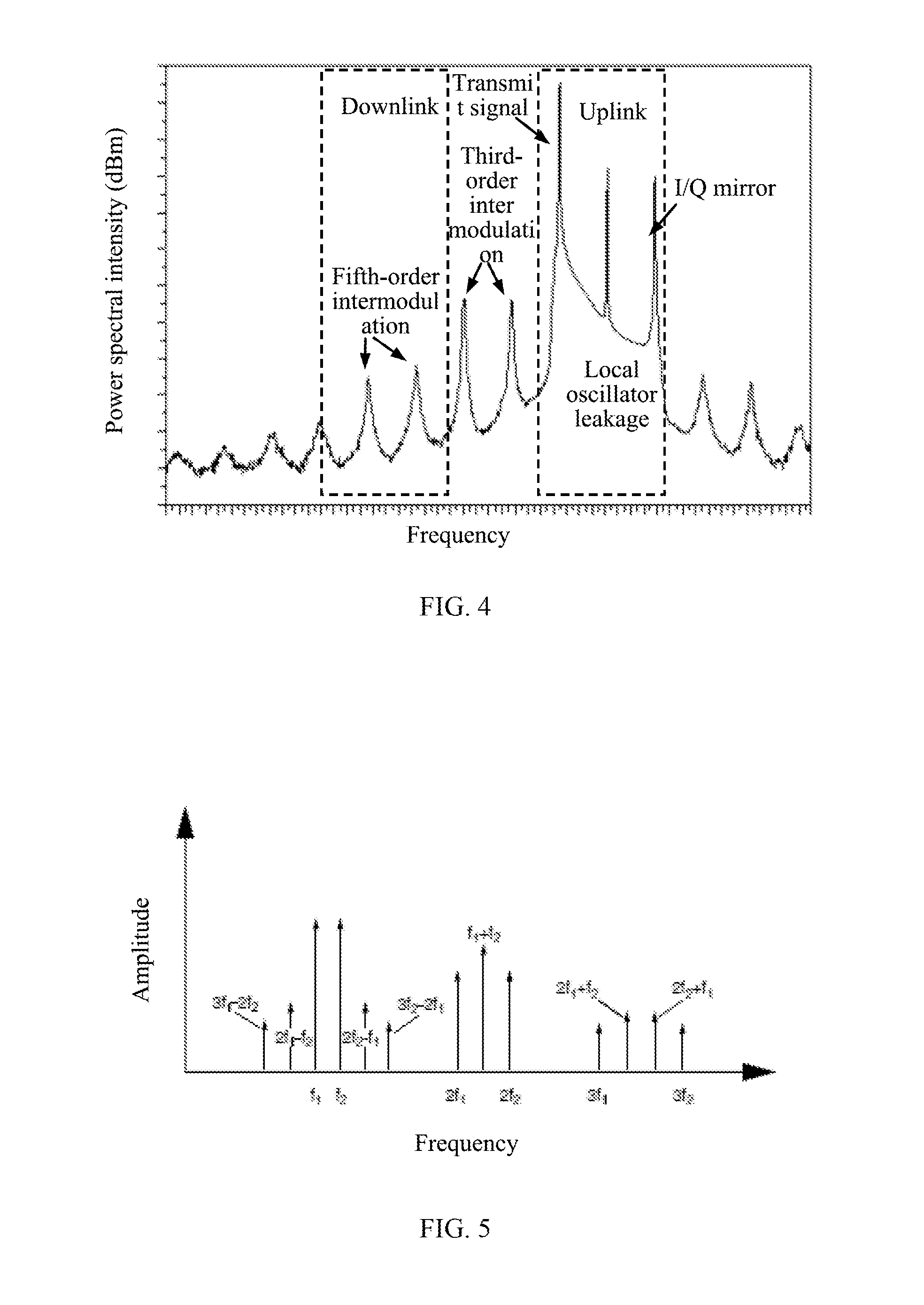Resource Scheduling Method, Radio Access Device, and Communications System
- Summary
- Abstract
- Description
- Claims
- Application Information
AI Technical Summary
Benefits of technology
Problems solved by technology
Method used
Image
Examples
embodiment 1
[0037]This embodiment mainly aims to solve a problem of mutual interference between different systems. For example, if operating frequencies of two communications systems deployed in a same geographical area are adjacent, due to limitations such as imperfectness of a transmitter filter and a receiver filter, the two coexistent communications systems interfere with each other. This may cause a link quality decrease and a system capacity reduction.
[0038]An embodiment of a resource scheduling method of the present invention may include: measuring an interference parameter value corresponding to each uplink resource block of a first communications system, where the interference parameter value is used to represent a degree of interference on a receive end of a second communications system when a terminal of the first communications system transmits data on a corresponding uplink resource block; if a first terminal accessing the first communications system needs to transmit uplink data, ...
embodiment 2
[0073]This embodiment is another embodiment of a resource scheduling method of the present invention. A solution in this embodiment mainly solves a problem of mutual interference between uplink and downlink of a same terminal. A resource scheduling method may include: measuring an interference parameter value of interference, caused by a non-linear uplink transmission product of a second terminal accessing a first communications system, on a downlink frequency band of the first communications system; and if downlink data needs to be transmitted to the second terminal, preferentially allocating a downlink resource block, whose interference parameter value is less than a second interference threshold and with which the non-linear uplink transmission product of the second terminal interferes, in the downlink frequency band to transmit the downlink data to the second terminal.
[0074]Referring to FIG. 3, specific steps may include the following steps.
[0075]301. A radio access device measu...
embodiment 3
[0087]This embodiment is another embodiment of a resource scheduling method of the present invention. A solution in this embodiment mainly solves a problem of mutual interference between uplink and downlink of a same terminal. A resource scheduling method provided in this embodiment includes: allocating a downlink resource block of a first communications system to a third terminal accessing the first communications system; and if the third terminal further needs to transmit uplink data, preferentially allocating an uplink resource block, away from the downlink resource block as far as possible in frequency, in an uplink frequency band of the first communications system for the third terminal to transmit the uplink data.
[0088]Referring to FIG. 6, specific steps may include the following steps.
[0089]601. A radio access device allocates a downlink resource block of the first communications system to the third terminal accessing the first communications system.
[0090]602. If the third te...
PUM
 Login to View More
Login to View More Abstract
Description
Claims
Application Information
 Login to View More
Login to View More - R&D
- Intellectual Property
- Life Sciences
- Materials
- Tech Scout
- Unparalleled Data Quality
- Higher Quality Content
- 60% Fewer Hallucinations
Browse by: Latest US Patents, China's latest patents, Technical Efficacy Thesaurus, Application Domain, Technology Topic, Popular Technical Reports.
© 2025 PatSnap. All rights reserved.Legal|Privacy policy|Modern Slavery Act Transparency Statement|Sitemap|About US| Contact US: help@patsnap.com



